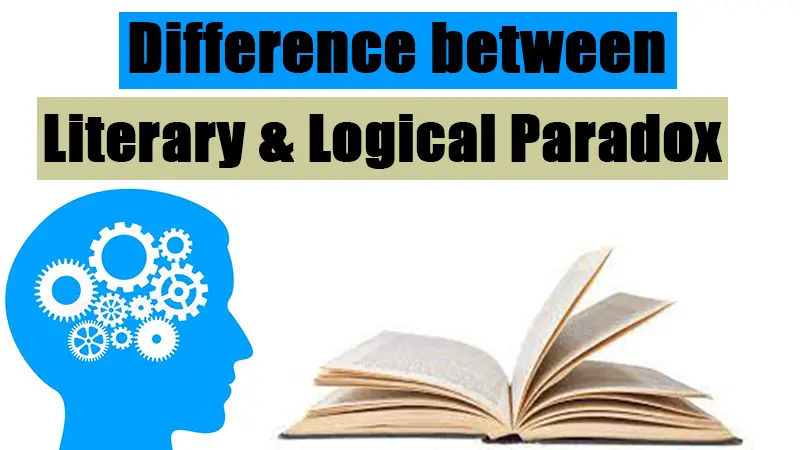Within the vast landscape of literature, contradictions can reveal profound truths. Consider the paradox:
Succeed by embracing failure.
Pause. How can failure lead to success? It seems counterintuitive, yet this advice carries a profound truth.
This is a paradox.
Both logical and literary paradoxes exist, and in literature, they serve as potent devices. But what exactly are paradoxes, and why do they captivate readers?
In this exploration, we provide a robust paradox definition and numerous examples, unraveling the essence of this rhetorical device and its compelling role in literature.
What is Paradox?
An easy definition of a paradox is that it’s a concept where a statement or idea contradicts itself. No need for a philosophical deep dive—paradoxes can be understood through straightforward examples.
So, what is a paradox in simple terms? It’s a situation where a statement seems to clash with itself, creating a contradiction. Keep this uncomplicated definition in mind, and you’ll quickly grasp the essence of paradox.
In essence, a paradox is a self-contradictory notion, a puzzle within language or thought. For instance, consider the paradox: “Less is more.” Another example is the classic “This statement is false.” These contradictions spark curiosity and add layers of complexity to our understanding of language and ideas.
Types of Paradox
There are two primary types of paradoxes: Literary paradoxes, woven into narratives, add layers of intrigue with captivating contradictions. Logical paradoxes, challenging conventional logic, create perplexing puzzles that defy straightforward solutions.
What is Paradox in Literature ( Literary Paradox )
Paradox Imagery in literature act as a powerful tool, injecting depth into narratives. A literary paradox is a statement that initially seems contradictory but, on reflection, unveils profound meaning or makes sense within the story.
An example of paradox in literature is evident in Shakespeare’s “Hamlet“: “I must be cruel, only to be kind.”
Similarly, in George Orwell’s “Animal Farm,” the paradox unfolds with the statement, “All animals are equal, but some animals are more equal than others.”
These literary paradoxes, like puzzle pieces in a story, make us ponder and question conventional ideas. Another instance is found in Oscar Wilde’s “The Picture of Dorian Gray,” where a picture ages while the person stays young.
In literature, these paradoxes enhance complexity, prompting readers to reflect on significant truths. Consider Joseph Heller’s “Catch-22,” where the main character has to appear insane to avoid perilous tasks—a vivid portrayal of paradox in literature.
What is Logical Paradox?
A logical paradox can be as puzzling as Socrates’ famous statement, “All I know is that I know nothing.” It sparks curiosity: if he truly knows nothing, how can he be aware of that?
Adding to the intrigue, consider the paradoxical claim, “Everything I say is a lie.” A perplexing dilemma unfolds—is the speaker telling the truth, or are they lying by making such a statement? This paradox remains unsolvable, leaving us in a quandary.
Now, ponder the question, “Is the answer to this question ‘no’?” It’s an unanswerable puzzle; responding with “no” leads to a contradiction, while a “yes” response creates another paradox. This enigma leaves us in a loop with no straightforward solution.
Difference Between Literary and Logical Paradox
Literary and logical paradoxes may sound alike, but they serve different purposes. A literary paradox adds spice to stories.
For instance, saying “Time stood still” in a thrilling moment—creates a contradiction that sparks imagination without breaking logical rules.
On the other hand, logical paradoxes are like clever puzzles that make us scratch our heads.
Consider saying, “I can travel back in time and change the past.” If it were true, then you could change the statement to be false, but if it’s false, then you shouldn’t be able to change anything—a tricky idea that challenges our usual way of thinking.
In summary, literary paradoxes jazz up tales with imaginative twists, while logical paradoxes play mind games with truth and reasoning. They’re both clever tools, but one dances in the world of creativity, and the other tests the limits of our logical thinking.
How Can You Avoid Confusing Paradox with Other Literary Devices?
Understanding the distinction between paradox and other literary devices is crucial to avoid common confusion. Most often paradox is confused with two common literary devices:
- Oxymoron
- Irony
Paradox vs Oxymoron:
Paradoxes and oxymorons both involve words that seem contradictory, but they work differently. Imagine saying, “I’m nobody,” which is a paradox because, even by saying it, you’re somebody. On the other hand, “pretty ugly” is an oxymoron, blending opposite words to create a vivid image.
Paradox vs Irony:
Paradoxes and irony can seem alike, but they serve different purposes. In a story, if someone says, “This is the worst day ever,” but they’re smiling, that’s irony—what they’re saying contrasts with how they feel. On the other hand, a paradox is like saying, “The more you learn, the less you know,” combining ideas that make you think. Understanding these examples helps avoid mixing up these literary tricks. You can also check through tool here what is the type in this.
Understanding these distinctions enriches the reading experience, ensuring that each literary device adds its distinct flavor to the narrative tapestry.
Final Thoughts
In the realm of literary expression, understanding paradox in literature alongside its counterparts—oxymoron and irony—enriches the fabric of storytelling. These linguistic tools infuse narratives with depth, offering a fascinating interplay of words that captivates the reader’s attention.
Paradox in literature challenge comprehension, oxymoron introduces striking contrasts, and irony infuses tales with unexpected turns. Embracing these elements allows readers to unravel the unique charm of each literary device, transforming the act of reading into a captivating exploration of language’s creative possibilities.

